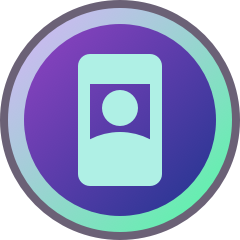-
Hi Karen,
So sorry for the delay. My computer access time has been reduced to a few minutes every few days.
Answers to your questions:
CGM? I just use a cheapie glucometer. Never tried a CGM. It might be good, but I never felt that my...Hi Karen,More
So sorry for the delay. My computer access time has been reduced to a few minutes every few days.
Answers to your questions:
CGM? I just use a cheapie glucometer. Never tried a CGM. It might be good, but I never felt that my cheapie glucometer was inconvenient. Also, I don't like having devices on me. I don't even wear a wristwatch.
Pens? I use syringes and vials. I find keeping things simple and basic gives me the most personal control.
The question about 20 minutes before insulin and different foods are part of the core of the SPP method. Timing is a major part of SPP however, the timing is not a fixed figure. It is derived from the log and varies. It may be 20 minutes, 10 minutes, 5 minutes or even 30 minutes.
The log I started out with was an 8-1/2 X 11-inch spiral bound notebook. The format and content evolved over the years. The important thing to realize is that every individual is different. So much so that there is no one size fit's all. There are so many variables that metabolic balance is different per individual (even identical twins) and everything changes for each individual throughout one's life. There is no standard, at least for control to non-diabetic levels. Changes occur daily, weekly, yearly, etc. To maintain non-diabetic blood sugars, all of the parameters must be tracked continuously. It is never static. The purpose of the log is for pattern tracking which determines the insulin dose and timing, food type, quantity and timing. While it is a detailed control method, you don't have to worry about any math or complicated science. There is no carb or calorie counting or carbs per insulin, etc. It's all about pattern tracking. Although, when I first started, I logged the ounces (weight) of everything for reference. Eventually, I stopped logging the weight once I learned to "eyeball it".
Logging is a matter of recording all the food eaten throughout the day and night along with the time and quantity of each item eaten - even a nibble. Glucometer testing is logged with time. I often double test, 15 - 30 minutes apart to determine if blood-sugar is rising or falling and at what rate. I typically test about 12 times per day. Insulin doses are logged with the insulin type, time and dose units. The point is to track the patterns, learn what affects what, in what way and in what time frame and learn how to make adjustments and fine tune to continuous non-diabetic levels.
As a buffer, I tend to take a few extra units of insulin beyond what should perfectly cancel a rise to 85 mg/dl. With that, I know that I will be going low. Double testing lets me know the downward rate (units per time) so I can estimate when I will cross the 70 mg/dl line and preempt it with a fruit snack pulling back up to 85 mg/dl (before actually reaching 70 mg/dl). The fruit snack is chosen by its rise rate and duration, which is derived from the log. It is the strategic snacks that are used for fine tuning. The fruit or any foods response characteristics in one's system changes with all of life's variables, so log tracking is necessary to make accurate in-the-moment predictions. I also keep a snack bag of medjool dates in my pocket at all times, in case I get distracted and miss a scheduled snack.
Fruits are the typical choice for adjustment snacks because their blood-sugar effect has a fast ramp rate with a short effect duration. This combination reduces the hazard of overcompensating. It is indeed possible to overcompensate with fruit, but the consequence is short lived.
Starting out may be quite shaky and make you think it is all going crazy, but as you start learning the patterns of the foods, activities and insulins it will all start to sync up. One thing to keep in mind is that it is very hard, if not impossible to synchronize your system if insulin resistant. As mentioned earlier, insulin resistance is increased with any fat intake that is 10% (or greater) of total calories. For me, and it appears typical of others, a greater than 10% intake in one meal will increase blood-sugar baseline about 48 hours later. Prior to that is appears benign. After that the effect lasts about 30 days - and it is additive. That is why it is generally not noticed. The greatest detriment is that it slows insulin action and lengthens blood-sugar spike durations of foods that should be short. A killer of keeping everything in sync. What this means is that if you have been on a low-carb diet with any food greater than 10% calories from fat, it will take quite a while before you can get things in sync. It took me almost a year.
In closing, I would like to point out that in the past, I have not been successful in portraying the SPP concept to a fully functional degree to anyone via Q&A on any forum. I believe this is due to it being so different from conventional methods that everyone is used to and tries to add the SPP method to what they are already used to. While it has been helpful to many, none have understood the concept sufficient to achieve continuous non-diabetic levels. That is why I decided to put it all in a book. Although I don't feel the SPP concept is complicated, it just takes more than Q&A to fully communicate the concept. As stated earlier, I don't mind Q&A and I hope it will be helpful, I just hope the book will actually help its readers become non-diabetic diabetics.
Also, if you want faster help, you could get coaching from Cyrus and Robby at: http://www.masteringdiabetes.org. They do not use the SPP method, but they can certainly help. I don't think it is free, but it is probably worth the cost.Post is under moderationStream item published successfully. Item will now be visible on your stream.
Mission Statement

To Promote and Encourage the Prevention and Reversal of Disease Through Personal Implementation of Practical Lifestyle Measures by Providing Starch-Smart® Health Education!
Frequently Used
My Videos
Site Access

Copyright © 2022 TheraLiv Inc








